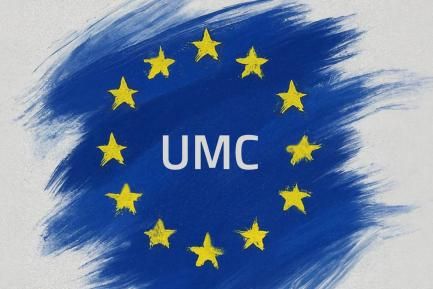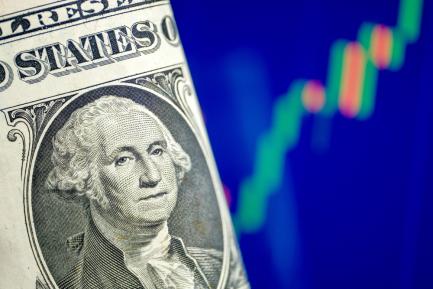The impact of bank bail-outs on national accounts
Since the financial crisis started in 2007, there have been numerous and varied interventions by countries to bail out or restructure their financial systems. Some of the bankruptcies have also been significant, such as that of Lehman Brothers in the United States in September 2008 or the Danish Amagerbanken and Fjord-bank Mors in 2011. However, due to the risk of contagion and the role played by banks in the payment system and flow of credit to the economy, countries have allocated large amounts of public money to bail out and restructure banks in difficulty.
To safeguard competition, all aid programmes offered to a sector or to a company by any European country must first be approved by the Directorate General for Competition of the European Commission. Since 2007, the number of approval applications for aid programmes for financial systems has rocketed. Between 2007 and 2010, European countries allocated 0.5 trillion euros in capital and liquidity aid (4% of Europe's GDP). This aid includes a wide range of measures: direct capital injections, with or without political rights; buying back toxic assets to get rid of balance sheet uncertainty or granting loans to boost liquidity. Banks have also been able to issue up to
1.1 trillion euros (9% of GDP) of debt with a government guarantee. In addition to this aid, there is also the macroeconomic policy of the European Central Bank, with its injections of liquidity and purchases of mortgage-backed securities.
Depending on their characteristics and scope, the impact of the measures adopted in different countries has varied, both in terms of sorting out the financial system and the national accounts of the respective countries. In this respect, giving a guarantee is not the same as offering credit or injecting capital. Neither is doing this directly the same as doing it through a society set up for this purpose, as is the case of the National Asset Management Agency (NAMA) in Ireland.
So, what has been the impact on national accounts of the state aid packages adopted over the last few years? Firstly, on countries' indebtedness. Injecting capital, buying up assets or granting credit all require large payouts by the central government which they have had to finance with more debt. According to Eurostat figures, countries' liabilities have grown by almost 644 billion euros (5.2 percentage points of GDP) as a consequence of state intervention in the financial sector. Of these liabilities, 70% are debt issues. But little of the aid has been non-refundable. That's why public assets have also grown, by nearly 563 billion euros (4.6 percentage points of GDP). Of these financial assets, 40% are shares in financial institutions.
One initial impact is therefore on the debt to acquire assets or shares in entities, whose net figure has grown by 0.6 percentage points of GDP. Depending on how the assets acquired perform and their potential to deteriorate, the public impact of this bail-out could be greater in the future.
But not all public aid is reflected on national balances. When this aid is given via guarantees, the impact on national accounts is different. Over the last few years, guarantees for issues of new debt have emerged as a key support measure but, to date, this has not led to any countries having to pay out money. Consequently, unlike capital measures or liquidity injections, they do not increase a country's debt. However, they do lead to contingent risks; i.e. potential risks for the future.
Ireland is a case in point. With the first symptoms of deterioration in its financial institutions, the decision was taken to nationalize and inject capital into them. The Irish government injected 4 billion euros and 2.7 billion euros (4% of GDP), respectively, in the Anglo Irish Bank (Anglo) and the Irish Nationwide (INBS). The country's debt rocketed. After Ireland was bailed out by the International Monetary Fund and the European Union, it decided to set up NAMA to continue to sort out the system. How does NAMA work? Financial institutions sell their riskiest loans to the agency in exchange for state-backed bonds. It is NAMA that issues the bonds granted to financial institutions in exchange for assets and, consequently, no public debt needs to be issued, which would increase debt. But the country's contingent risks increase due to the state guaranteeing the bonds.
Lastly, we should also note that countries might see a profit or loss resulting from all this aid, which would affect the country's deficit. Included under profit are payments for guarantees, commissions on loans, etc. And under losses are those of financing loans, deterioration in the assets acquired and, if applicable, the need to call on a guarantee. In this case, in the cumulative figure for 2007 to 2010, European countries have lost over 69 billion euros, increasing the public deficit by 0.4 percentage points. But the situation differs widely depending on the country. Ireland (–35.7 billion euros), Germany (–16.6 billion euros) and the United Kingdom (–15.0 billion euros) have accumulated the highest losses. However, between 2007 and 2010, France achieved a profit of 2.4 billion euros and Spain of 1.5 billion euros, in both cases slightly improving their deficit figures.
In a nutshell, the difficult economic and financial situation that has been going on since 2007 has led many countries to bail out their banks with tax revenue. But not all measures have the same impact on national accounts, nor do they entail the same potential income or future risks, considerations which, ultimately, are also being taken into account when designing bail-out schemes.
This box was prepared by Anna Mialet Rigau
Economic Analysis Unit, Research Department, "la Caixa"




